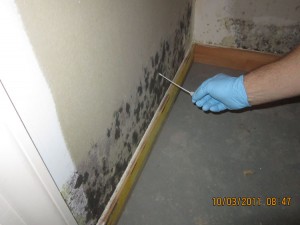 People don’t like mold growing in their refrigerators, much less behind their walls and in their homes, throwing toxic spores into the air. A bad mold invasion compromises the quality of breathable air and threatens the value of the property long term. Plus, the idea of mold growing unseen is an unpleasant thought for most people.
People don’t like mold growing in their refrigerators, much less behind their walls and in their homes, throwing toxic spores into the air. A bad mold invasion compromises the quality of breathable air and threatens the value of the property long term. Plus, the idea of mold growing unseen is an unpleasant thought for most people.
Of all the different ways and techniques to stop mold from growing in your home, which are the most important? This is what people want to know. Quick, easy, realistic ways to take mold out of the equation. Basically, it’s all about moisture and ventilation control. Mold thrives on moisture and stale air. The average homeowner will see better mold protection by installing a dehumidifier in key areas of the home. Ventilators can also help.
Cleaning up water damage events, quickly and thoroughly, is another important aspect. Others include paying attention to your external water drainage (gutters and downspouts), keeping water away from the base of the house, and keeping a close eye on other sources of water, such as steamy bathrooms or leaky faucets.
And here’s another way to get better at mold prevention: Avoid the mistakes made by other homeowners. In fact, the majority of these mistakes (which in many cases lead directly to mold problems, which require professional cleanup efforts) fall into one of three categories.
1. Letting it “air dry”
Effectively, mold cannot survive without moisture. It needs a source of water, whether on the ground, in the walls or floating in the air, to thrive and flourish. Yet many people don’t make this connection. Instead, they make a habit of leaving moisture to take care of itself—instead of being proactive about keeping the indoor environment dry.
- Use air conditioning and dehumidification to keep mold far away
- After any serious amount of precipitation or snowmelt, keep a close eye on the base of the house (internal and external) for signs of leaking. If you have a basement, inspect the area closely for signs of water entering.
- If there are leaky tubs, faucets or pipes in your home, they are best repaired asap, as leaving them alone can encourage mold/mildew growth.
- Carpet cleaning (or spills) that leave the carpet wet for longer than a day could put the carpet itself at risk of attracting mold growth
- Dry clothes and towels quickly, either in a dry or outside on a line
- Use a squeegee to dry the shower/bath area after the day’s final use
- In case of flooding, remove all household items and fixtures (including furniture and carpet) and allow them to dry.
2. Not having proper ventilation
It’s not only major events that cause mold growth—it’s little, everyday things. When you consider the amount of moisture generated in bathrooms and kitchens alone, the question of ventilation becomes more important. Without it, mold has a big advantage. Here’s how to enhance your home’s ventilation:
- Purchase/install a ventilator to work with your heating/cooling system
- Even without a ventilator, using your existing heating/cooling system will result in air exchange and thus some measure of ventilation
- When generating heat and moisture, try having nearby windows open to vent the moisture
Use fans to circulate the air
3. Not hiring a mold prevention specialist
When it comes to mold, some homes are more susceptible than others. Many homeowners already have a mold problem and don’t even now about it. That’s why consulting the pros is something to think about. Sure, it’s an added expense. But the cost of having your home assessed for mold is nothing compared to the cost of a full-scale mold removal project. Plus, most people are surprised when they learn how low-cost that first visit can be. And if you find a good expert, the insight you receive could be invaluable.
Avoiding Mold Prevention Errors
If you understand how mold grows and what you can do to prevent it, chances are you’ll never have to make that call to a mold specialist. But if there’s an element of uncertainty, or if you’re fairly certain you do have a mold problem, finding a qualified expert is the way to go.
Thanks for stopping over! Please comment.

